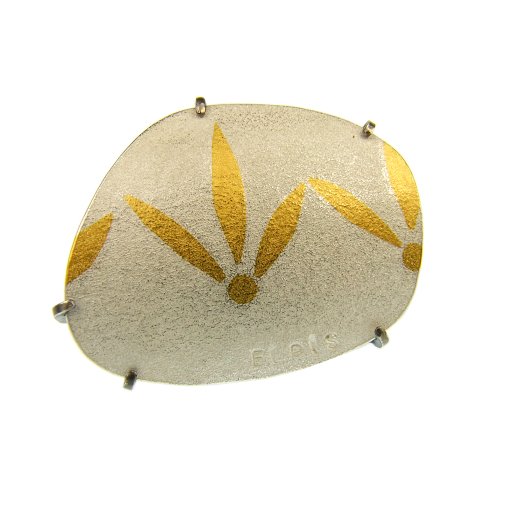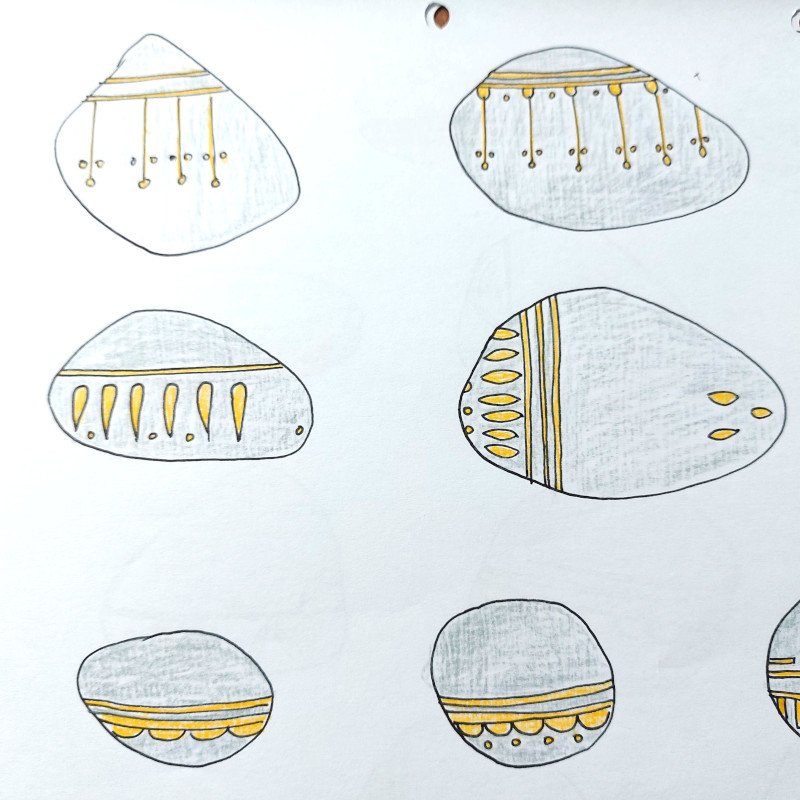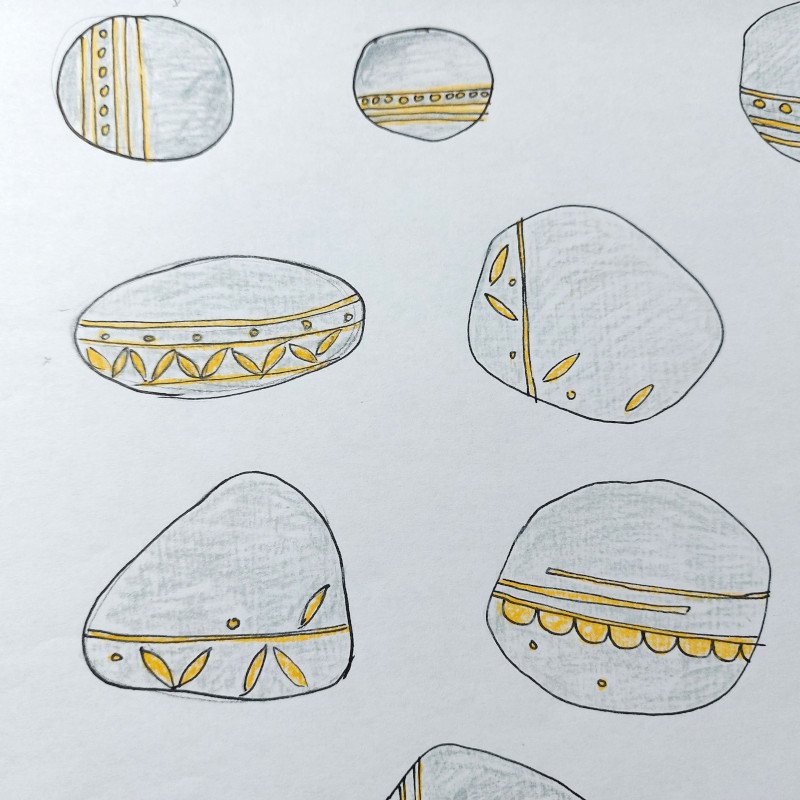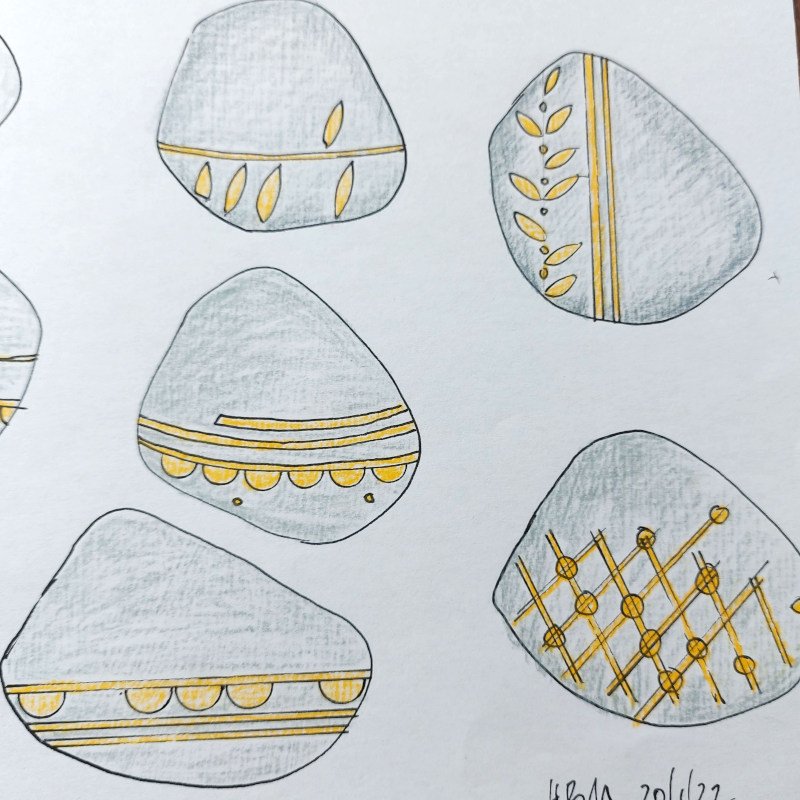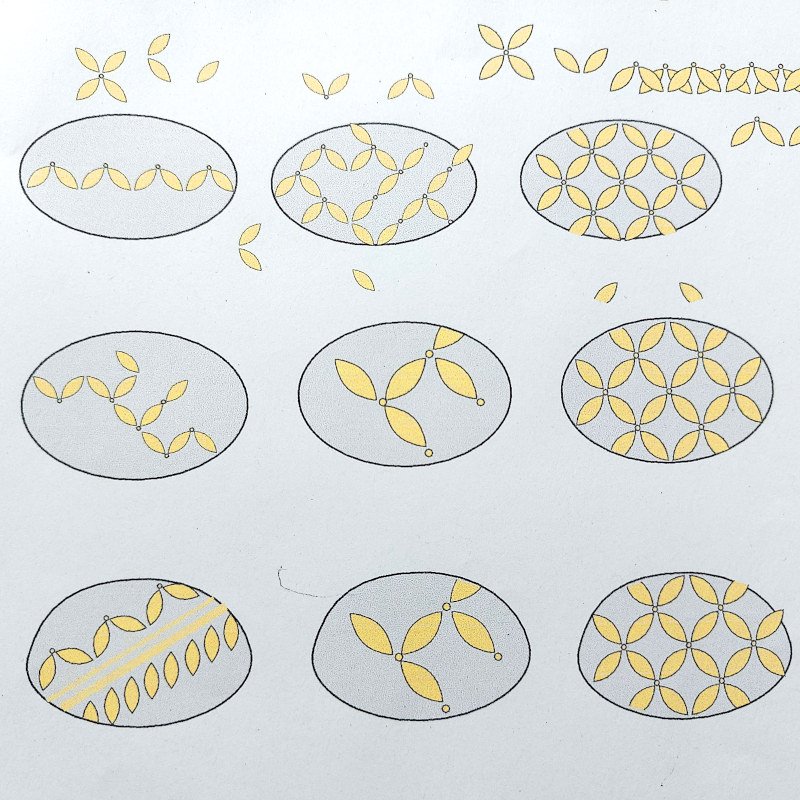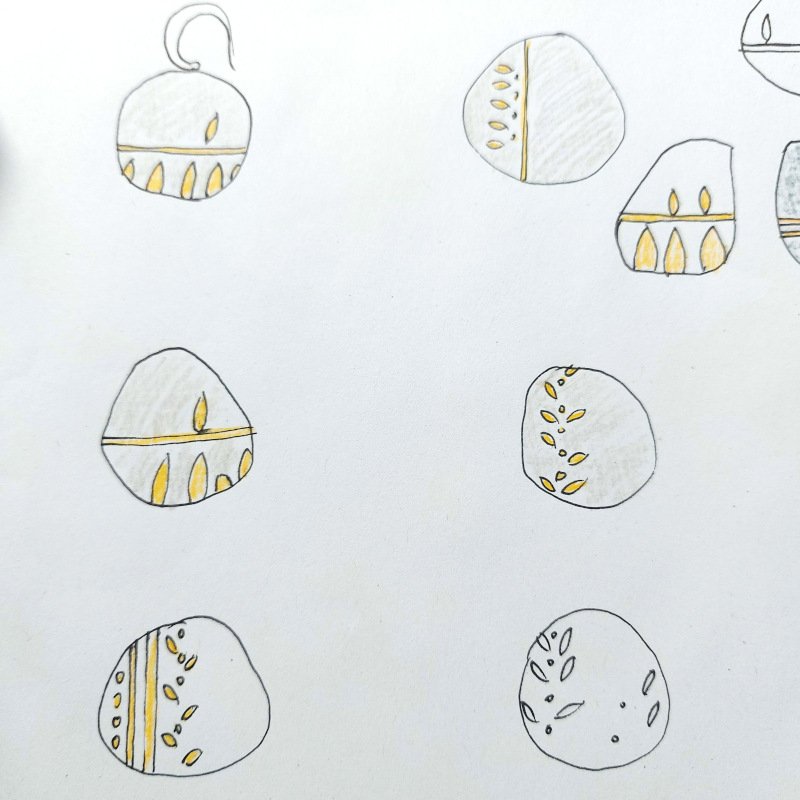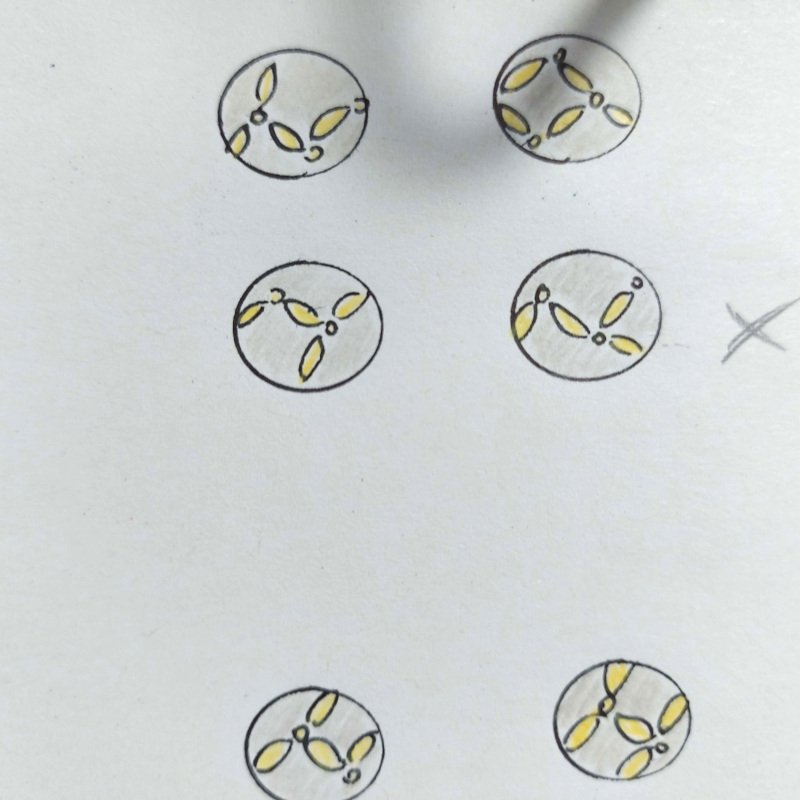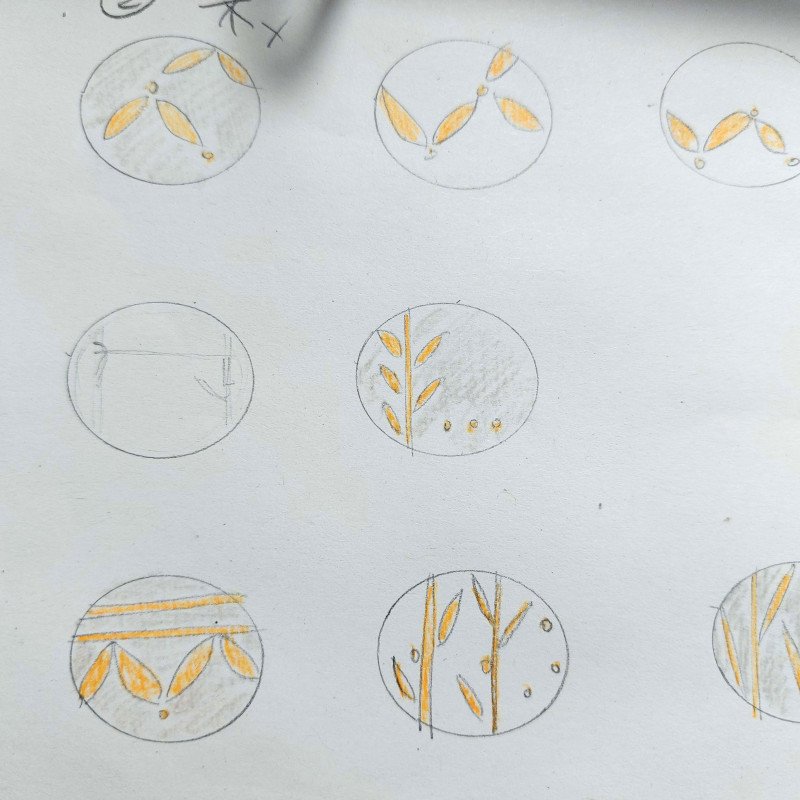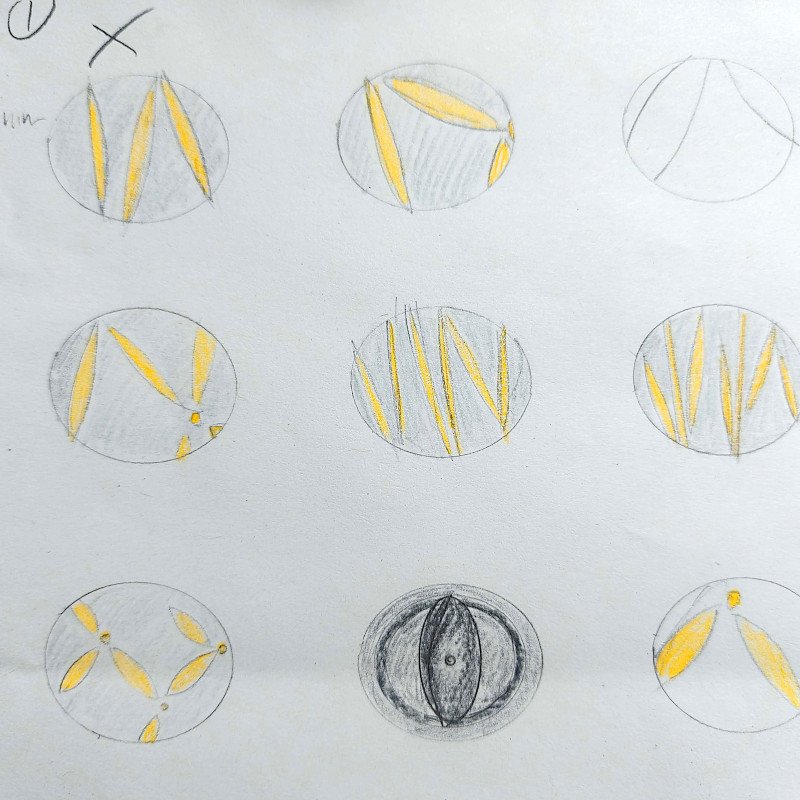Next week, I will finally take part in an in-person craft fair again! I really look forward to the meeting the other makers, visitors and having the chance to talk about my work, my ideas and processes.
Being self-employed and working on my own the majority of the time, these moments to share and to get feedback on my work are really precious!
In this blog, I wanted to share the thoughts and ideas behind my new collection, Interrupted Patterns, that I will be launching at the Craft Festival at Bovey Tracey from 17-19th June.
In my earlier posts (January and February) I wrote about my visit to the British Museum, my current fascination with ancient Greek myths and the creation process of a particular brooch (Elpis – Hope), which is now part of the current Meanings and Messages touring show of the Association for Contemporary Jewellery. (Please see the link for touring dates and venues.) I have also written about this amazing exhibition in my May blog where I focus on my favourites of the show.
The Elpis brooch led on to the making of a second one (The Greek Shard II) and the exploration of patterns.
Patterns have always fascinated me. In 2005 I travelled to Portugal and was amazed by the tile work on the facades of buildings. I took so many photos without really knowing why. (This was a few years before I returned to making).
I loved how the patterns were constructed; how each individual tile was part of a larger image and I wondered how they were constructed and imagined in the first place.
The images below show how the overall pattern on a wall was often created by the corners of the tiles, rather than the full area of each tile. (Click to enlarge!)
Earlier this year, when visiting family in Jerusalem, I went with my father-in-law to the Museum of Islamic Art. We both agreed it was a treasure trove of amazing artefacts of different places and times. Again, patterns (and of course the examples of exquisite ancient jewellery) struck me. (Click to enlarge!)
Back at home, I leafed through the many books I accumulated over the years, trying to bring it all together. The Grammar of Ornament by Owen Jones being a favourite. I kept returning to a lens-shape that was used in patterns of different cultures. This simple shape would be arranged in a variety of ways to make up complex patterns.
When writing my February blog about Greek ceramics and the creation of my brooch, I started to understand that I was particularly drawn to the broken shards of pottery found in the ground: the pieces on which only parts of patterns could be seen. Those pieces, where the actions of time had done their part in removing some of the original decorations, leaving behind only traces, hints of once beautiful and complex patterns.
It was exactly this, that fascinated me: what happens in the mind when a pattern is interrupted. It seems that the mind seeks to continue it, imagining what it could have been, making connections of its own accord and perhaps making up stories about the use and users of the original object.
These broken shards of a Greek amphora illustrate the point. You can read here the story of the piece, its original use and how they were pieced together again.
Interrupted or disjointed patterns are beautiful in themselves, they may no longer be perfect, but by being disjointed they form new, irregular patterns. As before, the mind may continue them or perhaps seeks to repair them, making them whole again.
For my new pieces I then started to draw random outlines containing patterns, usually with combinations of the lens-shapes and lines. As I continued, I focussed on a particular layout of the lens shape in formations of four around a dot.
I imagined the pieces to be made in two different techniques – one being made with the Keum-Boo process that I have used in the past to create, for example, my stripy pieces; the other being made with 18ct gold. The latter was to be quite different in character to the first, giving a raised, more three-dimensional surface than before.
Having started out with the two brooches on random outlines, I wanted these pieces to have regular backgrounds, so that the viewer would concentrate on the patterns.
The following images show the process of making these pieces (Click to enlarge!)
Here, a few images of one of the final pieces. It is made from recycled sterling silver and 18ct Single Mine Origin (SMO) gold.
Following on from these pieces, I continued doing drawings for the Keum-Boo pieces. I moved away from the regular lens-shape and allowed my drawings to become freer. It reminded me a little of painting, using long brush-strokes to make ink marks on paper.
Some of these drawings are shown below and the ones on the right led to the small lapel pin brooch below, which is currently exhibited at Contemporary Applied Arts, London.


